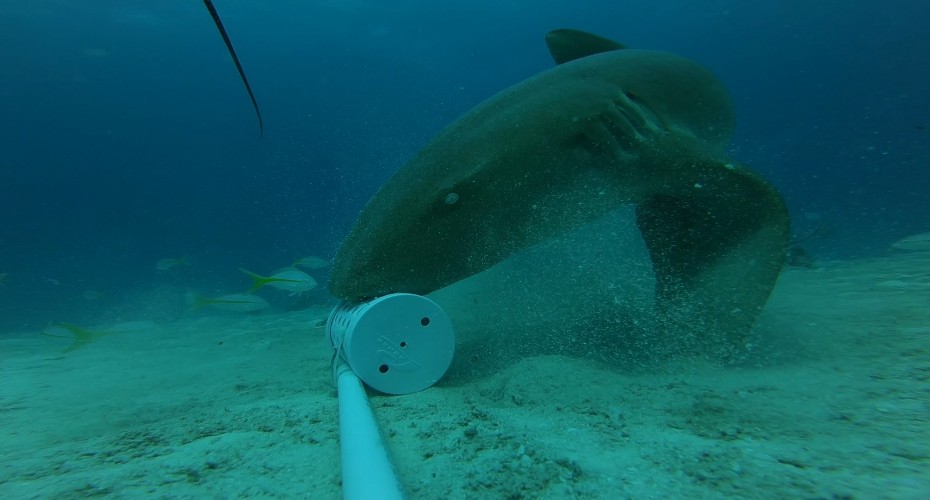Underwater footage reveals sharks’ flexible feeding skills

Underwater cameras have revealed the impressive range of skills nurse sharks use when feeding.
The new study, by the University of Exeter and NGO Beneath the Waves, used baited remote underwater video (BRUV) cameras off the Turks and Caicos Islands.
The researchers identified a range of different feeding behaviours used by the sharks.
These included vertical feeding (head down), ventral feeding (belly up) and “pectoral positioning” – sharks flexing their pectoral fins in a motion similar to “walking” on the sea floor.
“These feeding behaviours show that nurse sharks are adapted to feed on different prey across a variety of habitats,” said lead author Kristian Parton, of the Centre for Ecology and Conservation on Exeter’s Penryn Campus in Cornwall.
While most shark species have little movement in their pectoral fins, nurse sharks are related to epaulette sharks, which can “walk” on dry land using these fins.
“Our footage suggests nurse sharks may do something similar on the sea floor,” Parton said.
“This work illustrates the immense behavioural adaptability of coastal shark species,” noted Dr Oliver Shipley, Senior Research Scientist at Beneath The Waves.
“Despite their widespread nature, we know comparatively little about nurse shark behaviour relative to other coastal species, so this study provides an important step to further understanding their ecological role.”
Previous research on nurse sharks has mostly focused on their reproductive behaviour. However, this new research helps shine a light on the important role nurse sharks play on tropical reefs around the world.
The study was supported by Big Blue Collective (www.bigbluecollective.com).
The paper, published in the journal Environmental Biology of Fishes, is entitled: “Opportunistic camera surveys provide insight into discrete foraging behaviours in nurse sharks (Ginglymostoma cirratum).”



